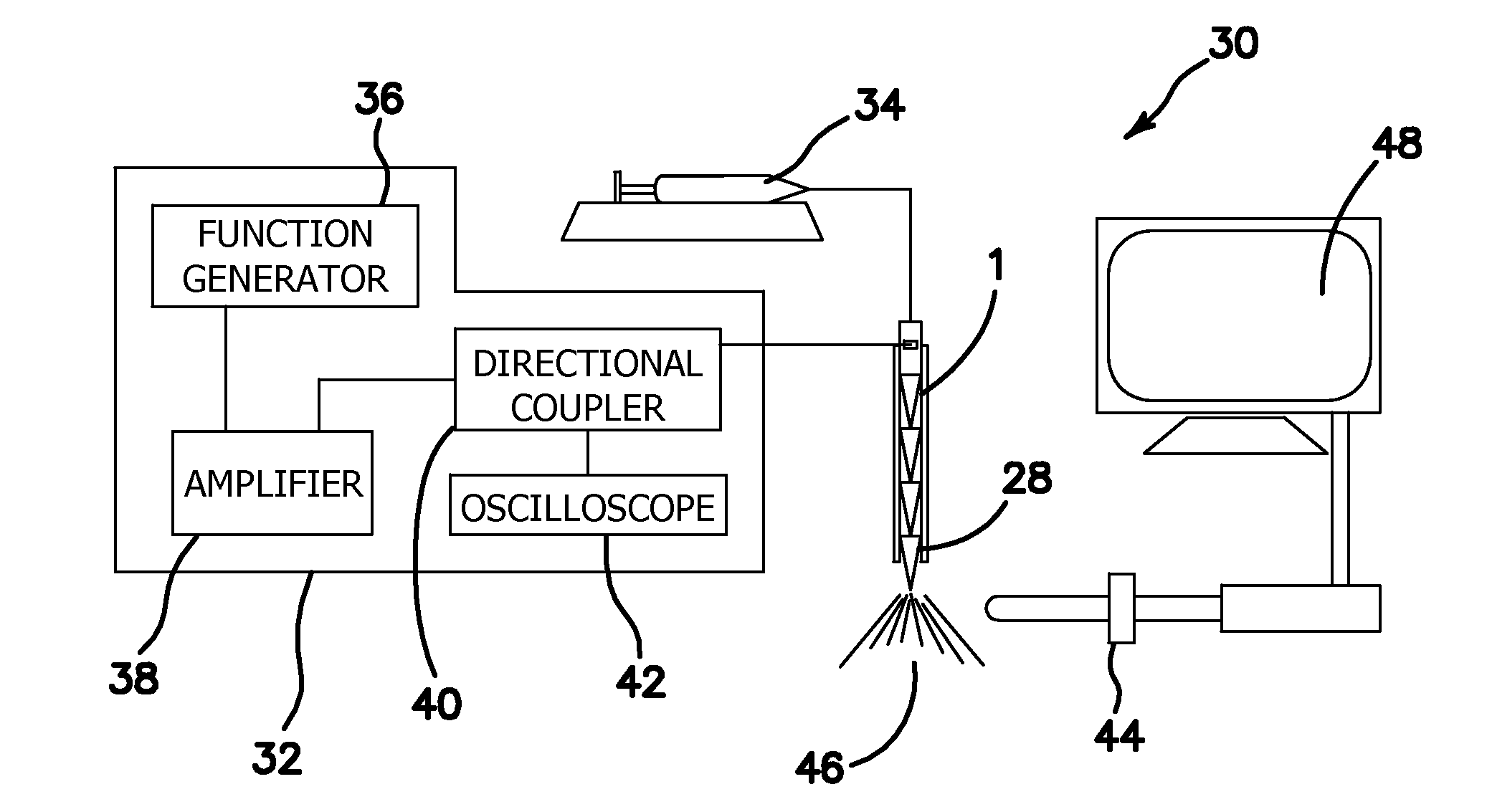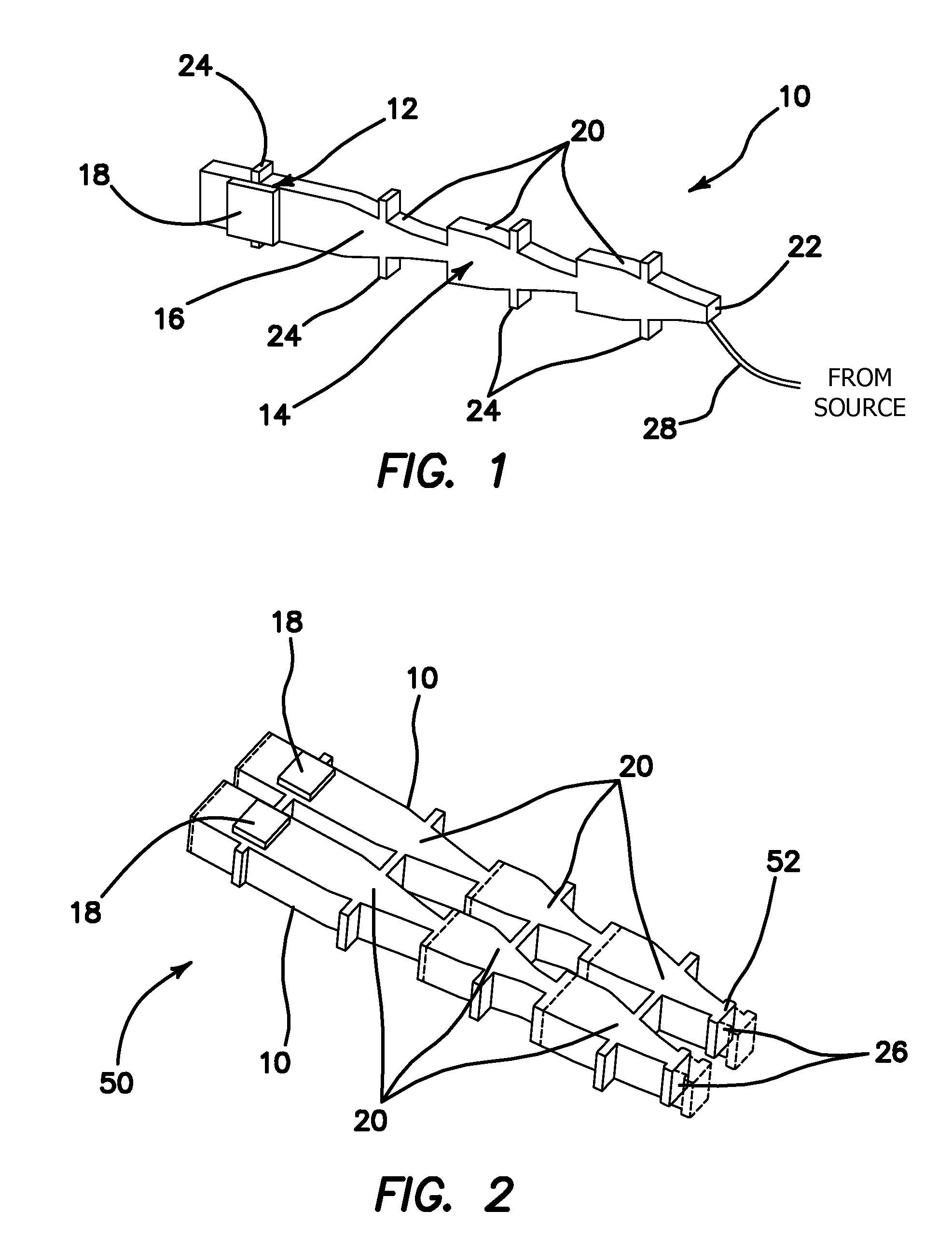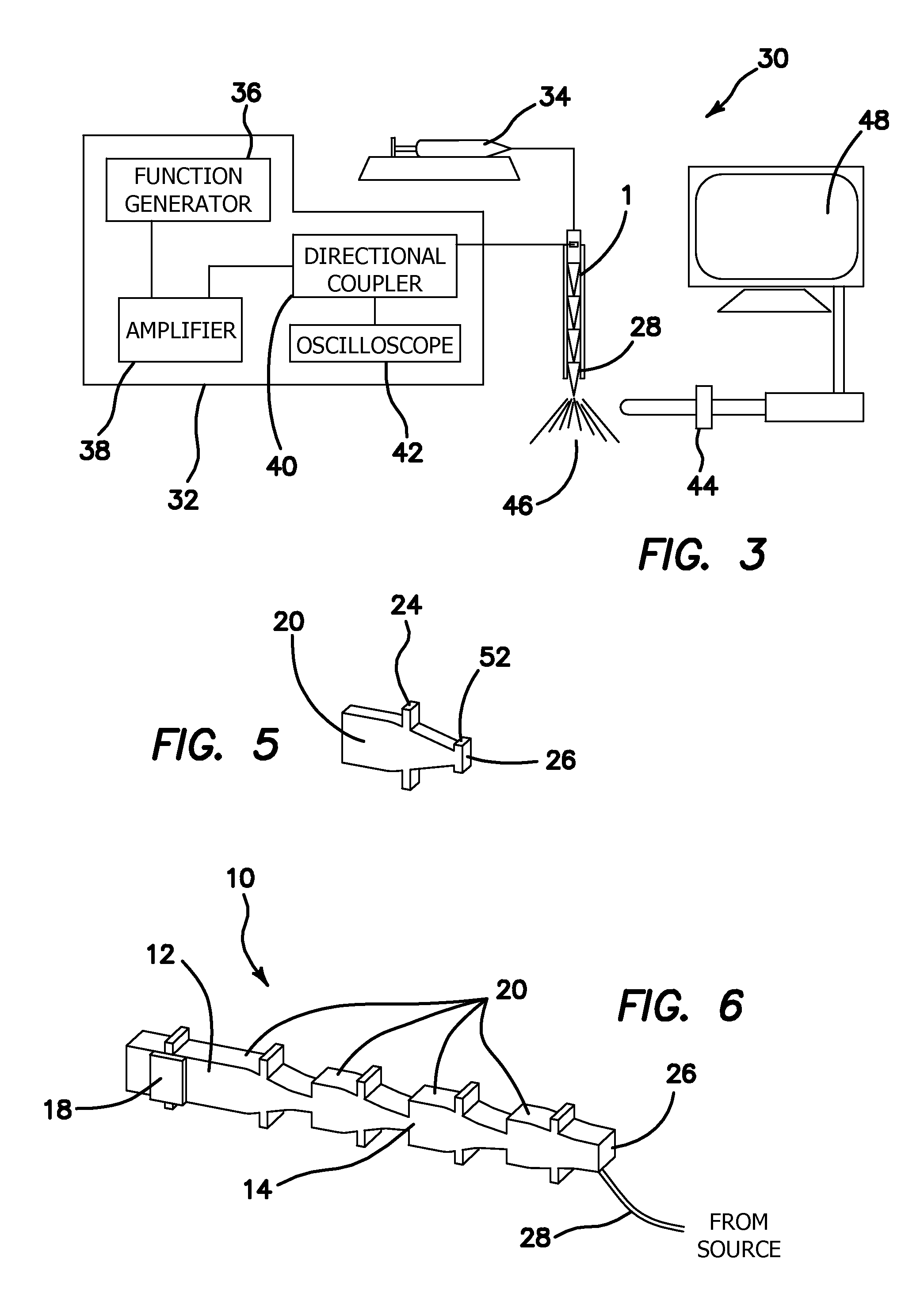Method or transporting a liquid for atomization and a method and devices for atomizing the same
a technology of liquid atomization and method, which is applied in the direction of spray nozzles, movable spraying devices, spray inhalators, etc., can solve the problems of inability to produce requiring much higher electrical drive power, and producing monodisperse or narrowly-sized droplets at very low throughput, so as to achieve the effect of great reduction of electrical drive power requirements
- Summary
- Abstract
- Description
- Claims
- Application Information
AI Technical Summary
Benefits of technology
Problems solved by technology
Method used
Image
Examples
Embodiment Construction
[0026]The miniaturized ultrasonic nozzle device 1 of the current invention is comprised of a silicon single-nozzle device, generally denoted with reference numeral 10 as seen in FIG. 1, supported by two silicon strips, one on each side (not shown) and coupled to the nodal bars 24 that are disposed laterally through the silicon single-nozzle device 10. It is to be expressly understood that the single-nozzle device 10 in FIG. 1 is equivalent to the miniaturized ultrasonic nozzle device 1, and is used henceforth for brevity. The single-nozzle device 10 comprises a drive section 12 and a resonator section 14 in a common silicon substrate 16 that is made of one or more pieces of silicon wafers. The drive section 12 comprises a piezoelectric transducer such as lead zirconate titanate (PZT) 18 coupled to the rectangular shaped base of the silicon substrate 16 using a silver paste as is known in the art. It is to be expressly understood, however, that other forms of bonding such as welds, a...
PUM
 Login to View More
Login to View More Abstract
Description
Claims
Application Information
 Login to View More
Login to View More - R&D
- Intellectual Property
- Life Sciences
- Materials
- Tech Scout
- Unparalleled Data Quality
- Higher Quality Content
- 60% Fewer Hallucinations
Browse by: Latest US Patents, China's latest patents, Technical Efficacy Thesaurus, Application Domain, Technology Topic, Popular Technical Reports.
© 2025 PatSnap. All rights reserved.Legal|Privacy policy|Modern Slavery Act Transparency Statement|Sitemap|About US| Contact US: help@patsnap.com



